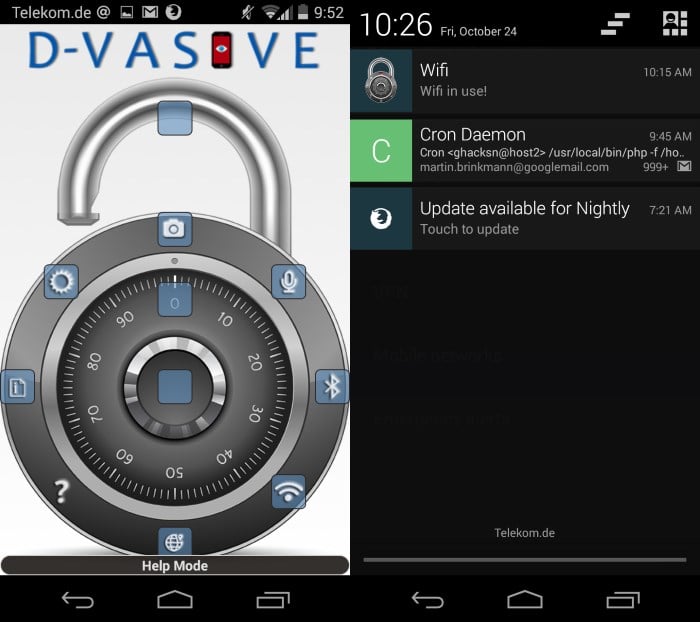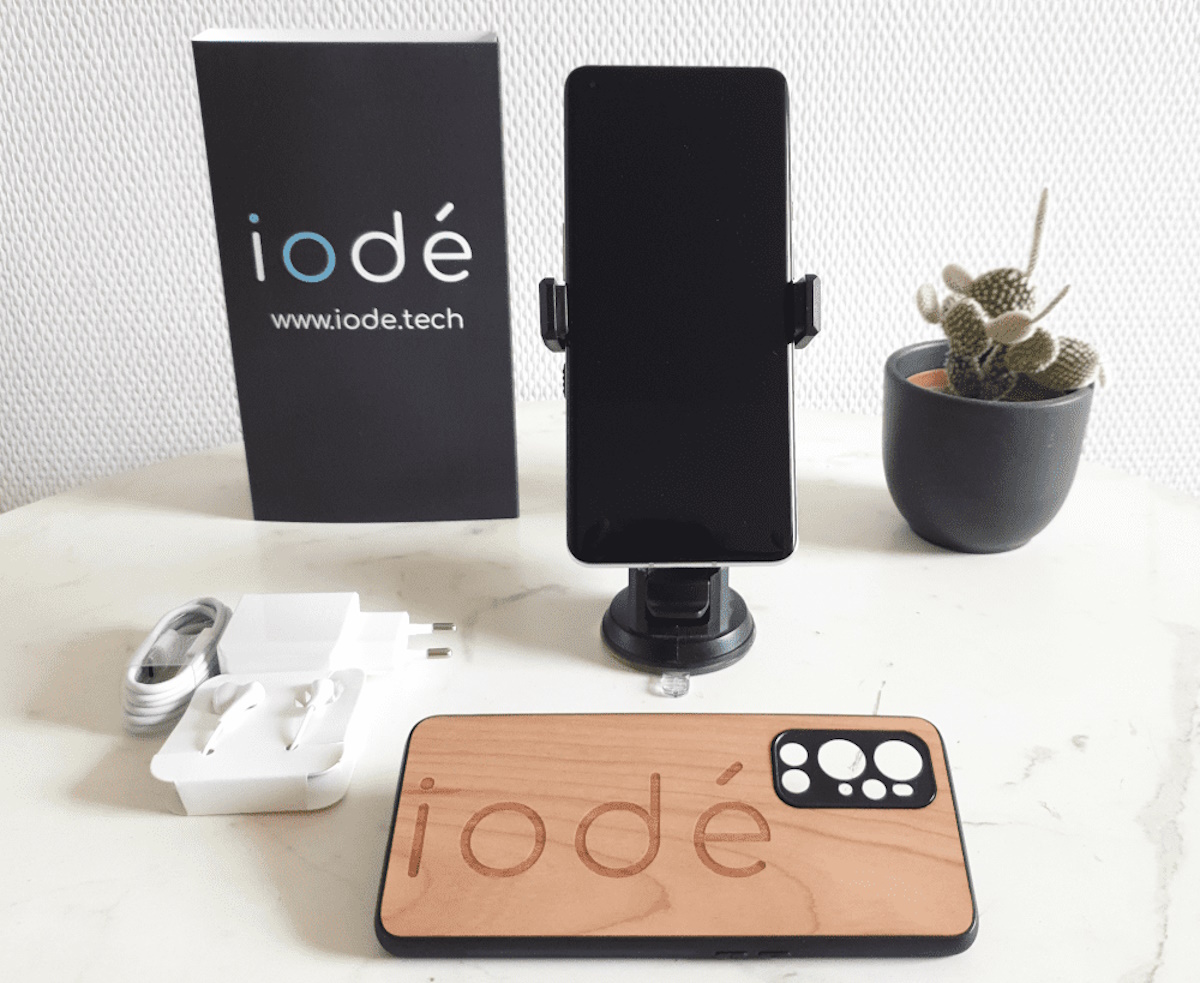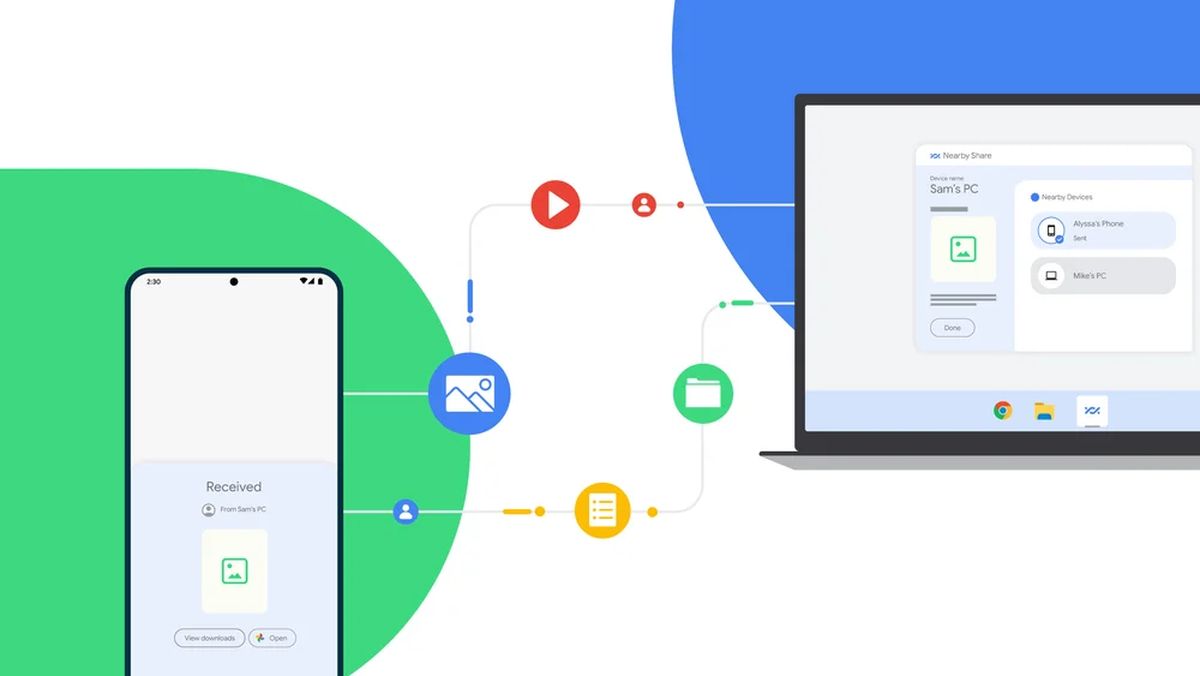D-Vasive alerts you when Android features such as the microphone get enabled

Whenever you install an application on an Android device a list of permissions that it requests is displayed to you first. It is necessary to agree to those permissions to install the app.
While that is true for apps that users install directly, information about system apps and pre-installed applications by device manufacturers are not as they are already on the device when it ships.
Google grouped permissions together recently which makes it difficult to determine which of the grouped permissions an Android app requires and which it does not use.
The camera and microphone permission group for instance is required when an app wants to use the phone's camera or microphone. You'd expect a camera app to request that permission, but not necessarily that it will use the microphone as well, for instance to record what is being said in your vicinity.
Apps are available in store that let you mute the microphone for example, but that still requires you to do so manually.
D-Vasive is a new application by John McAfee that is available as a free and paid version. The core difference between both versions is that the free version notifies you about apps that start making use of camera features such as the microphone or wireless Internet while the Pro version allows you to stop and lock these features.
The application can detect the following feature activations:
- When an app starts the phone's camera.
- When the microphone is activated.
- When Bluetooth or WiFi are activated.
- Detect which apps track your location.
Whenever an application activates one of those features you will receive a notification about it. While you cannot block the activation using the free version, you at least know that it has been activated.
One shortcoming here is that you are not informed about the app that activated it directly. You need to tap on the notification or open the log manually, and tap on the specific time and data again to see which apps were running during the time the access was noticed.
Apps are categorized by threat level. Another tap on an application displays that apps' full list of permission so that you know exactly what it is allowed to do. Explanations for each are available, and apps can be stopped or uninstalled right from that page as well.
Another feature of the application is the ability to run an application security scan. A list of installed and system apps are displayed on the screen sorted by threat level. A tap on an app displays the permissions again with options to uninstall or stop an app.
Here is a video walkthrough of the main features:
Closing Words
D-Vasive Free alerts you whenever apps try to access core Android features. That's a good thing and users may want to run the app for a while just to see which apps activate which feature on their phone or tablet.
With that said, the free app is limited to notifications which means that you may need additional applications to lock down the device after all.
The app runs in the background at all times and will use battery because of that. You can modify the scan interval to reduce that though.



























Not sure if this is a good thing or not, but it appears that the author of this app is John McAfee. John is a somewhat controversial figure and I would probably want more reassurance that the app itself is not a security threat. For more on John, search YouTube.
There’s paranoia, and then there’s healthy paranoia. I’m not sure which category this app falls into :-)
FWIW I’m running CyanogenMod 11 (android 4.4.4) and the built-in privacy guard apparently still offers me fine-grain control over permissions (e.g. makes the distinction between camera and microphone) despite what Google has done with grouped permissions.
This app doesn’t fall into either category of the false dichotomy given above. It falls into the privacy category.
I’m delighted to hear about this app and looking forward to trying it out. Thanks for letting us know about this, Martin!
I was wondering about putting that on my Galaxy 3. Wasn’t sure what advantages I’d really get. Apparently thats one of them.